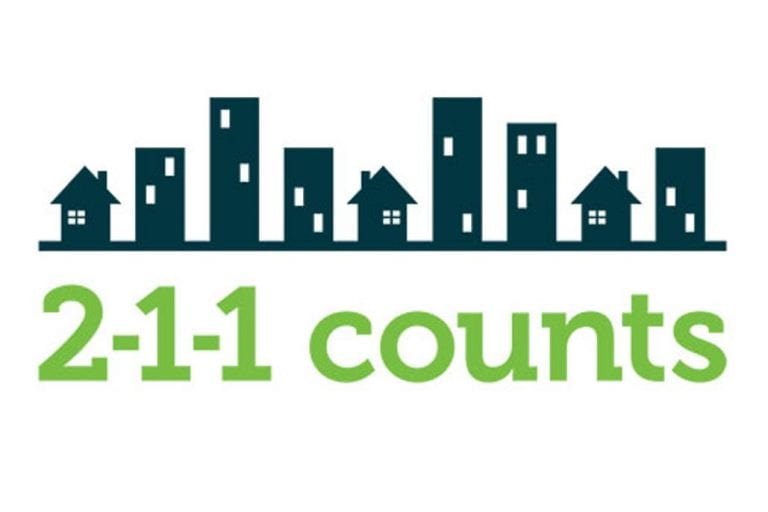Items
3.5 Million social needs requests during COVID-19: What can we learn from 2-1-1?
Kreuter M, Garg R, Javed J, Golla B, Wolff J, Charles C. 3.5 Million social needs requests during COVID-19: What can we learn from 2-1-1? Health Affairs Blog. 2020. doi: 10.1377/hblog20200729.432088
A 2-1-1 research collaboration: participant accural and service quality indicators
Eddens KS, Alcaraz KI, Kreuter MW, Rath S, Greer R. A 2-1-1 research collaboration: participant accural and service quality indicators. American Journal of Preventive Medicine. 2012;43(6)(suppl 5):S483-489. doi: 10.1016/j.amepre.2012.09.007.
A community-based approach to promoting walking in rural areas
Brownson RC, Baker EA, Boyd RL, et al. A community-based approach to promoting walking in rural areas. American Journal of Preventive Medicine. 2004;27(1):28-34. doi: 10.1016/j.amepre.2004.03.015.
A glossary for dissemination and implementation research in health
Rabin BA, Brownson RC, Haire-Joshu D, Kreuter MW, Weaver NL. A glossary for dissemination and implementation research in health. Journal of Public Health Management and Practice. 2008;14(2):117-123. doi: 10.1097/01.PHH.0000311888.06252.bb.
A novel intervention using interactive technology and personal narratives to reduce cancer disparities: African American breast cancer survivor stories
Pérez M, Sefko JA, Ksiazek D, et al. A novel intervention using interactive technology and personal narratives to reduce cancer disparities: African American breast cancer survivor stories. Journal of Cancer Survivorship. 2013;8(1):21-30. doi: 10.1007/s11764-013-0308-4.
Achieving cultural appropriateness in health promotion programs: targeted and tailored approaches
Kreuter MW, Lukwago SN, Bucholtz DC, Clark EM, Sanders-Thompson V. Achieving cultural appropriateness in health promotion programs: targeted and tailored approaches. Health Education and Behavior. 2003;30(2):133-146. doi: 10.1177/1090198102251021.
Adapting tailored intervention message libraries for new populations and settings: Why, when, and how?
Skinner CS, Buchanan A, Kreuter MW, Holt CL, Bucholtz DC, Strigo T. Adapting tailored intervention message libraries for new populations and settings: Why, when, and how? Health Education. 2003;103(4):221-229. doi: 10.1108/09654280310485555.
Addressing social needs in health care settings: Evidence, challenges, and opportunities for public health
Kreuter MW, Thompson T, McQueen A, Garg R. Addressing social needs in health care settings: Evidence, challenges, and opportunities for public health. Annual Review of Public Health. 2021;42:329-344. doi: 10.1146/annurev-publhealth-090419-102204
Advancing collaborative research with 2-1-1 to reduce health disparities: challenges, opportunities, and recommendations
Hall KL, Stipelman BA, Eddens KS, et al. Advancing collaborative research with 2-1-1 to reduce health disparities: challenges, opportunities, and recommendations. American Journal of Preventive Medicine. 2012;43(6) (suppl 5):S518-528. doi: 10.1016/j.amepre.2012.09.026.
Advancing tailored health communication: a persuasion and message effects perspective
Rimer BK, Kreuter MW. Advancing tailored health communication: a persuasion and message effects perspective. Journal of Communication. 2006; 56 (suppl 1):S184–201. doi: 10.1111/j.1460-2466.2006.00289.x.
African American men’s perceptions of factors influencing health-information seeking
Sanders Thompson VL, Talley M, Caito N, Kreuter M. African American men's perceptions of factors influencing health-information seeking. American Journal of Men’s Health. 2009;3(1):6-15. doi: 10.1177/1557988307304630.
African American’s self-report patterns using the National Cancer Institute Colorectal Cancer Screening questionnaire
Hood S, Thompson VL, Cogbill S, Arnold LD, Talley M, Caito NM. African American’s self-report patterns using the National Cancer Institute Colorectal Cancer Screening questionnaire. Journal of Cancer Education. 2010;25(3):431-436. doi: 10.1007/s13187-010-0068-z.
African-American Breast Cancer Survivors Participating in a Breast Cancer Support Group: Translating Research into Practice
Wells AA, Gulbas L, Sanders-Thompson V, Shon EJ, Kreuter MW. African-American Breast Cancer Survivors Participating in a Breast Cancer Support Group: Translating Research into Practice. Journal of Cancer Education. 2013; Epub ahead of print.
Alcohol and tobacco advertising in black and general newspapers: targeting with models and message cues?
Cohen EL, Caburnay CA, Rodgers S. Alcohol and tobacco advertising in black and general newspapers: targeting with models and message cues? Journal of Health Communication. 2011;16(6):566-582. doi: 10.1080/10810730.2011.551990.
Analysis of US child care safety regulations
Runyan CW, Gray DE, Kotch JB, Kreuter MW. Analysis of US child care safety regulations. American Journal of Public Health. 1991;81(8):981-985. doi: 10.2105/AJPH.81.8.981.
Applying projective techniques to formative research in health communication development
Wiehagen T, Caito NM, Thompson VS, et al. Applying projective techniques to formative research in health communication development. Health Promotion Practice. 2007;8(2):164-172. doi: 10.1177/1524839906289818.
Are patients of women physicians screened more aggressively?
Are patients of women physicians screened more aggressively? A prospective study of physician gender and screening
Strecher VJ, Harris R, Kobrin SC, Skinner CS. Are patients of women physicians screened more aggressively? A prospective study of physician gender and screening. Journal of General Internal Medicine. 1995;10(3):119-125.
Are tailored health education materials always more effective than non-tailored materials?
Kreuter MW, Oswald DL, Bull FC, Clark EM. Are tailored health education materials always more effective than non-tailored materials? Health Education Research, Theory, and Practice. 2000;15(3):305-315. doi: 10.1093/her/15.3.305.
Assessing the capacity of local social service agencies to respond to referrals from health care providers.
Kreuter MW, Garg R, Thompson T, McQueen A, Javed I, Golla B, Caburnay C, Greer R. Assessing the capacity of local social service agencies to respond to referrals from health care providers. Health Affairs 2020;39(4):679-688. doi: 10.1377/hlthaff.2019.01256
Awareness of mammography controversy among lower income African American women in urban public health centers
Kreuter MW, Holt CL, Skinner CS. Awareness of mammography controversy among lower income African American women in urban public health centers. Journal of Women's Health. 2004;13(1):121-122. doi:10.1089/154099904322836546.
Baby Be Safe: the effect of pediatric injury prevention tailored communications provided in a primary care setting
Nansel TR, Weaver N, Donlin M, Jacobsen H, Kreuter MW, Simons-Morton B. Baby Be Safe: the effect of pediatric injury prevention tailored communications provided in a primary care setting. Patient Education and Counseling. 2002;46(3):175-190. doi: 10.1016/S0738-3991(01)00211-7.
Black newspapers as a tool for cancer education in African American communities
Caburnay CA, Kreuter MW, Cameron G, et al. Black newspapers as a tool for cancer education in African American communities. Ethnicity and Disease. 2008;18(4):488-495.
Cancer control needs of 2-1-1 callers in Missouri, North Carolina, Texas and Washington
Purnell JQ, Kreuter MW, Eddens KS, et al. Cancer control needs of 2-1-1 callers in Missouri, North Carolina, Texas and Washington. Journal of Health Care for the Poor and Underserved. 2012;23:752-767. doi: 10.1353/hpu.2012.0061.
